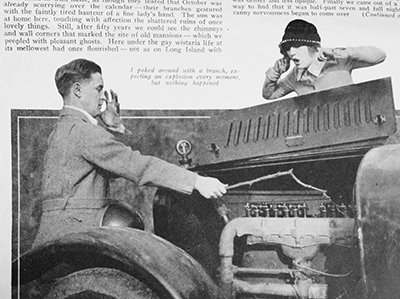

Scott and Zelda with their storied car, “The Rolling Junk,” in MOTOR magazine, 1924.
“What to Do About It” centers on a young male doctor. Dr. Bill Hardy is “irreverent,” to put it mildly, as he copes with both hypochondriacs and the truly ill. It is a boy-gets-girl tale made strange and fantastical, and surely cinematic, by the intersections of medicine and a madcap, gangster-derived plot.
Fitzgerald sent “What to Do About It” to Harold Ober in August 1933. The Saturday Evening Post, always the first port of call for Fitzgerald’s stories for many years by then, thought the story “not satisfying,” while Cosmopolitan found it “too subtile.” None of the magazine editors knew quite what to think of the boy, Ober’s own favorite character in the story and the originator of the title phrase.
In the summer of 1936, Ober suggested that a revised version of the story could go out for consideration again, but Fitzgerald replied he could “scarcely remember the plo[t]” and sent “Thank You for the Light,” which he’d just finished, instead. The surviving typescript of “What to Do About It” remains the property of the Trustees of the Fitzgerald Estate.